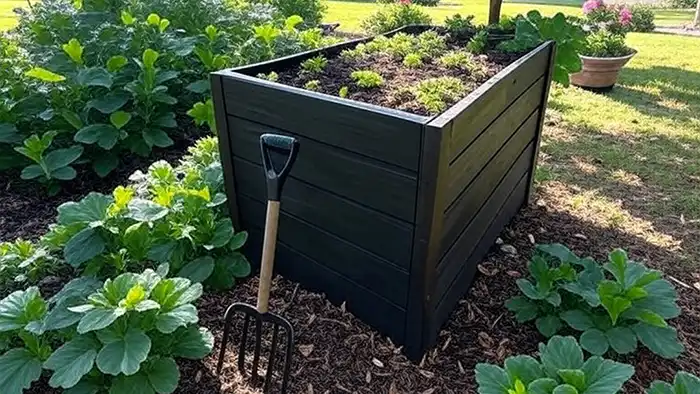Residential and Household Composting
Turn your waste into garden gold

Composting is easy and effective
Household Composting
What is composting?
Residential or backyard composting is the natural process of allowing organic materials to decompose into a rich soil known as compost. Organic materials such as kitchen scraps, household plants, yard waste, or etc. will decompose. Residential composting is a controlled acceleration of nature's natural process. When you compost your organic waste you are returning nutrients back into the soil. This creates a product known as compost. Compost has many uses vital to sustainable living.
Using Compost as a Soil Conditioner
Since compost can improve the quality of nearly any soil it is often considered a soil conditioner. When adding compost to your soil, you improve the soils physical and biological properties. The addition of an organic compost also alters its chemical composition. When natural nutrients are combined with inorganic particles such as sand or silt you change the soils structure. Changing the soils structure or chemical composition can be beneficial in the following ways.
Simple Instructions for Composting Yard Waste
What You'll Need
- A compost bin or designated compost area (3x3x3 ft is ideal)
- Yard waste (grass clippings, leaves, small branches)
- Kitchen scraps (optional: fruit/vegetable peels, coffee grounds)
- Pitchfork or shovel for turning
- Water source (hose or watering can)
Steps
- Choose a Spot: Pick a level, well-drained area in your yard with partial shade. Ensure it's easily accessible but not too close to your home to avoid pests.
- Set Up Your Bin/Area:
- Use a compost bin (purchased or DIY with wire mesh/wood) or mark a 3x3 ft area.
- Place a layer of coarse material (small branches or straw) at the bottom for aeration.
- Add Materials:
- Greens (nitrogen-rich): Fresh grass clippings, green leaves, or kitchen scraps.
- Browns (carbon-rich): Dry leaves, small twigs, or shredded cardboard.
- Ratio: Aim for 3 parts browns to 1 part greens (e.g., 3 buckets of dry leaves to 1 bucket of grass clippings).
- Avoid: Meat, dairy, oily foods, pet waste, or diseased plants.
- Layer and Moisten:
- Alternate layers of greens and browns, like a lasagna.
- Lightly water each layer to keep the pile as moist as a wrung-out sponge (not soggy).
- Turn the Pile:
- Every 1-2 weeks, use a pitchfork or shovel to mix the pile. This adds air and speeds up decomposition.
- If the pile smells bad, add more browns and turn it more often.
- Monitor and Maintain:
- Check moisture weekly; add water if too dry or browns if too wet.
- In 2-6 months, the pile should turn into dark, crumbly compost with an earthy smell.
- Use Your Compost: Spread finished compost in garden beds, around trees, or on your lawn as a natural fertilizer.
Tips
- Chop or shred large materials (branches, leaves) to speed up composting.
- Cover fresh kitchen scraps with browns to deter pests.
- Be patient—composting is a natural process and takes time.
- Smells bad? Add browns, turn more often, or ensure it's not too wet.
- Not breaking down? Add greens, turn the pile, or check moisture levels.
- Pests? Secure the bin lid or avoid adding food scraps.